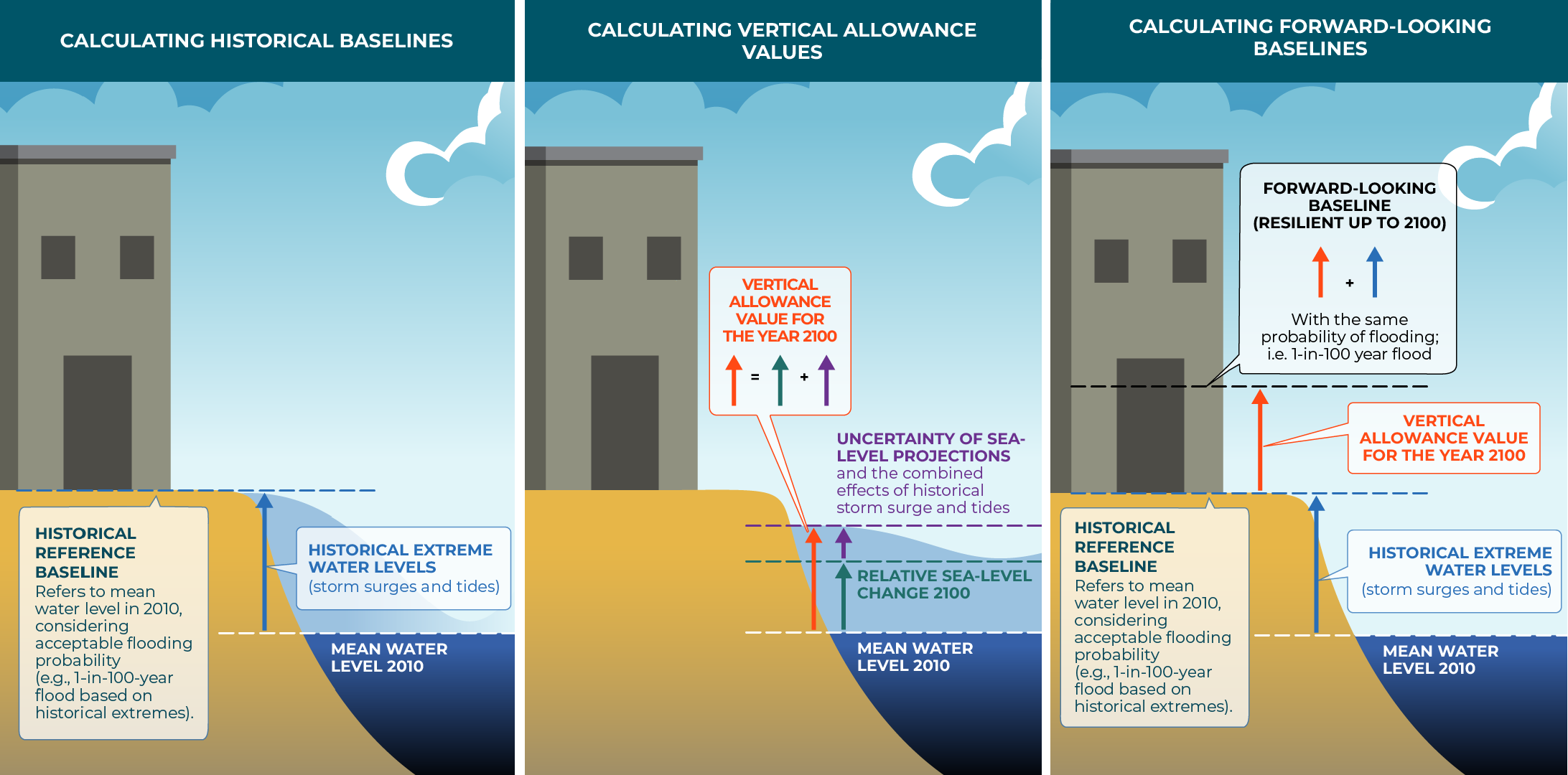Climate change impact on sea levels in Canada: The need for future projections
Communities and ecosystems along Canada’s 243,000 km coastline face both challenges and opportunities from climate change. By the end of the century, the average rise in global sea levels could exceed one meter.1 However, sea-level change varies from region to region, and local changes can differ substantially from the projected global average.
The differences in relative sea-level change in Canada are due to factors like local vertical land motion including subsidence (sinking) and post-glacial rebound (uplift). Most of the Atlantic and Pacific coasts of Canada, along with certain northern regions (e.g., the Beaufort coast in the Arctic) are projected to experience sea-level rise greater than the global average due to land subsidence, potentially increasing the frequency and magnitude of extreme water-level events in the coming century.2 On the other hand, locations in areas such as Hudson Bay, Nunavut, and northern Québec (i.e., Nunavik) may experience decreases in sea levels due to post-glacial rebound3. Sea-level change in either direction may increase risks to infrastructure, ecosystems, and coastlines. Thus, although the direction and extent of sea-level change differs by location, all coastal communities in Canada will need to prepare. Vertical allowances offer coastal communities a way to identify, assess, and respond to future sea-level changes.









